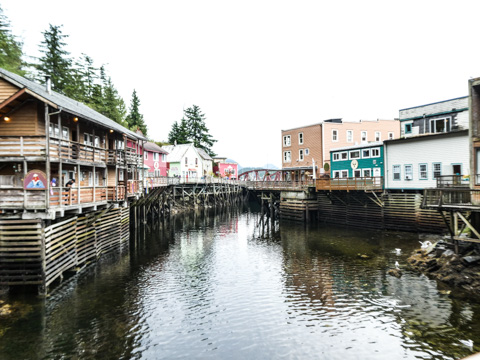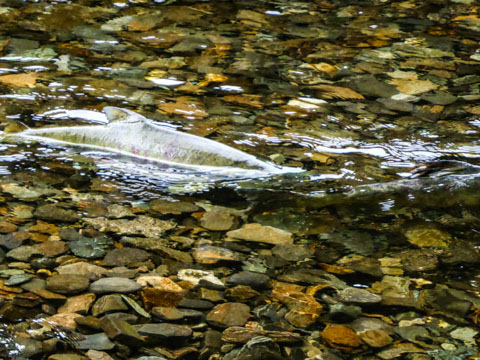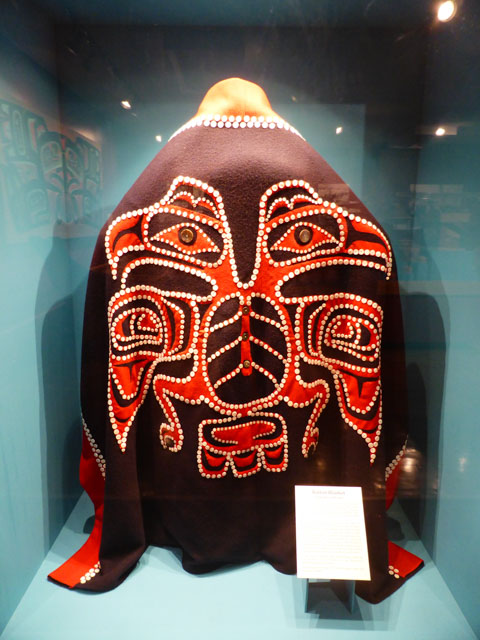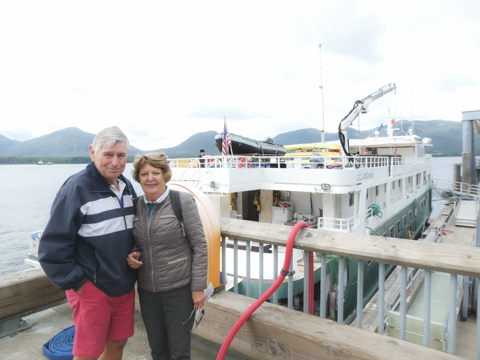What a surprise! We strolled down the gangway and see Sandy, Sarah, Ric and David waving to us. They had been able to see the Sojourn docking and they came over to meet us.
Ric & Sandy in front of Uncruise
We went over to see their ship, the Uncruise which was much more of an expedition ship, smaller – only 76 passengers and with even more toys than the Sojourn. The Salts went to the ferry to make their connections to Denali and the four of us went to explore Ketchikan and find coffee.
Of all of the Alaskan towns James and I visited, Ketchikan was the one that looked like you could live there. Very hilly, so many of the houses had a view. Many kindly locals would say as you walk up the hill: “Make noise, there is a Mama Bear around”.

It is no wonder the bears were nearby, because the salmon were running. We walked up to Creek Street and watched the salmon in their struggle to go upstream, with insistent interference from a friendly little harbour seal trying to catch his lunch.
We followed the road up the stream to watch the different varieties of salmon on their way to spawn. By the time the salmon are this far along they have shed their scales and soon arrive at the natal stream. Wikipedia says that salmon are a keystone species, as the nutrients in their carcasses are transferred from the ocean to both wildlife and riparian woodlands near the ocean. The female salmon searches for the gravel bed of her youth and uses her tail to create a depression, called a redd. She will lay up to 5000 eggs and then continue upstream before moving on to make another redd. This usually happens about seven times. After spawning, they quickly die and the owners of a house located on the stream say the putrid rotting fish smell lasts for about two months.

Some males will develop humps, before they travel upstream. The hump attracts the sight of the bears, hoping to protect the females and the roe. They also develop teeth to fend off other salmon from trying to fertilise their eggs. You do see the males fighting in the streams. Some local children told me they were zombie salmon. Bears will eat salmon only before they lay their eggs.
We walked from the stream up to the Ketchikan Totem Heritage Center, with beautiful First Nation artifacts. The pre-19th century totem poles are one of the largest collections of unrestored totem poles, found at abandoned villages. They have other crafts on display like this ceremonial robe and new totem pole.


Next stop, Wrangell.
